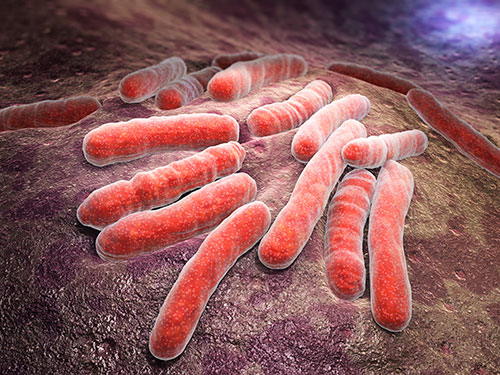
As a zoonotic disease, tuberculosis can infect both people and cattle. That also means that tuberculosis can cross back and forth from humans to cows. Unfortunately, these days, if a cow contracts tuberculosis, odds are the strain came from humans. Why has this happened?
For the first time in 23 years, tuberculosis in no longer declining within the U.S. human population. The number of cases per 100,000 people has leveled off at three (3). And the majority of those cases are found in foreign-born residents, reported the Centers for Disease Control and Prevention.
Tuberculosis, simply known as TB to many of us, is a devastating lung infection caused by the bacterium Mycobacterium tuberculosis. It is spread through the air making it highly contagious.
The disease is so devastating and so contagious that the founder of this magazine, W.D. Hoard, led a crusade beginning in 1895 to eradicate it from the dairy-cow population. The bitter campaign lasted 45 years. The struggle cost thousands of cancelled subscriptions and lost revenue as this magazine battled alone in the early years to free herds from heavy health losses and to protect the consuming public from milk-borne tuberculosis.
By 1940, the United States cattle herd was declared free from tuberculosis. At the time, some medical leaders hailed the campaign as "man's great victory over tuberculosis."
These days, if tuberculosis is found in a dairy herd, the federal government becomes involved with the disease investigation and a herd buyout can take place. In many cases, all exposed cattle are slaughtered; the premises are disinfected and even left vacant for a period of time.
While TB outbreaks are rare in cattle, it's humans and some wild animal populations that are the main source of the contagious disease.
The 2015 increase in TB cases was slight in the human population - 9,563 versus 9,406 the year before. However, it suggests the national goal of reducing the disease incidence to one case or fewer per million people is no longer on track.
Among those 9,563 TB cases last year, 3,201, or 33.5 percent, occurred in U.S.-born persons. That is an incidence rate of 1.2 per 100,000 people. Meanwhile, 6,335, or 66.5 percent, of the cases occurred among foreign-born people for a TB incidence rate of 15.1 per 100,000.
Although most cases of TB are curable, this concerning trend reversal in humans also comes at a time when antibiotic resistant strains of the diseases are spreading.
For those of us in the dairy business, the TB trend deserves our vigilance.
(c) Hoard's Dairyman Intel 2016
April 11, 2016








